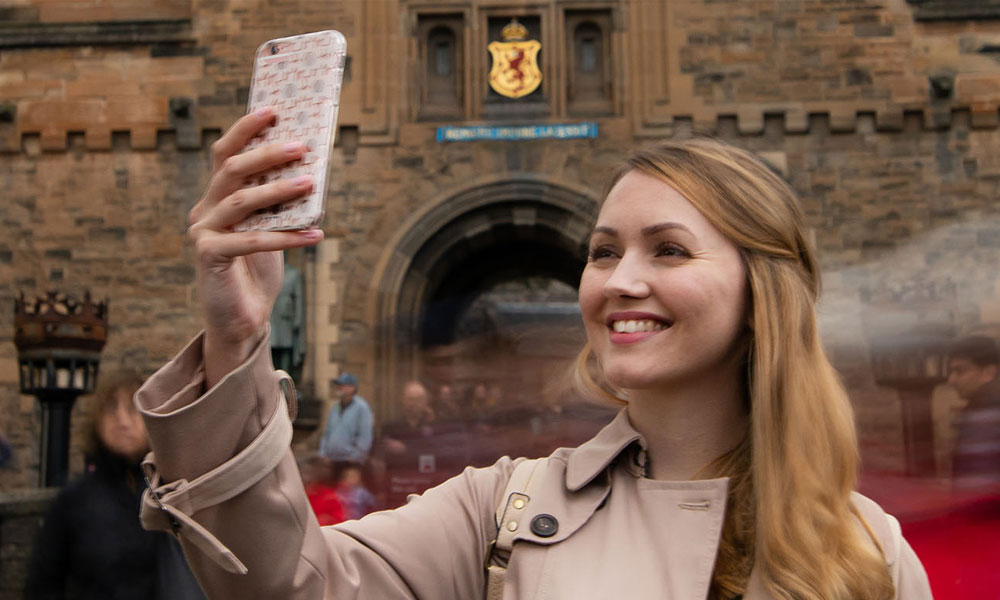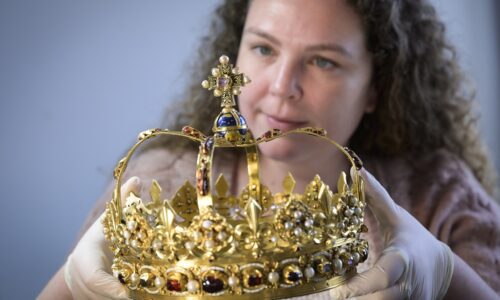
Preserving Scotland’s Heritage: The Honours of Scotland
30 November 2023
The Honours of Scotland have gone through a very exciting project this year, led by Reed Hudson, our Senior Metals Conservator at Historic Environment Scotland (HES).
These famous treasures – the Crown, Sceptre, and Sword of State – hold profound historical significance and can be traced back through centuries of Scottish history. This vital conservation work will help to preserve the honours for years to come.
The first recorded use of the Honours was at the coronation of Mary, Queen of Scots, in 1543. Their last use was as coronation regalia at the coronation of Charles II in 1651, which took place at Scone Palace. They were used to represent the absent sovereign at Parliament following the 1707 Act of Union. They were then locked away in the crown room, and famously rediscovered by Sir Walter Scott in 1818. They have been on display in the Castle ever since, though temporary removals have taken place.
The ‘Scottish Crown Jewels’ as they are sometimes known do still play a role in events today, such as the opening of the Scottish Parliament. They are also part of coronation proceedings, as they are presented in a National Service of Thanksgiving when a new monarch is crowned. The last time this happened was in the summer of 2023.
A Glimpse Into History
Adapted from an older crown for King James V in 1540, the magnificently adorned crown is a testament to Scottish craftsmanship. Fashioned with Scottish gold and embellished with an array of pearls and precious gems like diamonds, amethysts, and garnets, it stands as a symbol of regal splendour.
The Sceptre, gifted to King James IV in 1494 by Pope Alexander VI, features a large, polished rock crystal with a pearl on top and finely carved figures and engravings along its length.
The Sword of State, bestowed upon King James IV by Pope Julius II in 1507, carries a unique mark – a scar from its historic past when it was broken while being smuggled past forces in 1651.
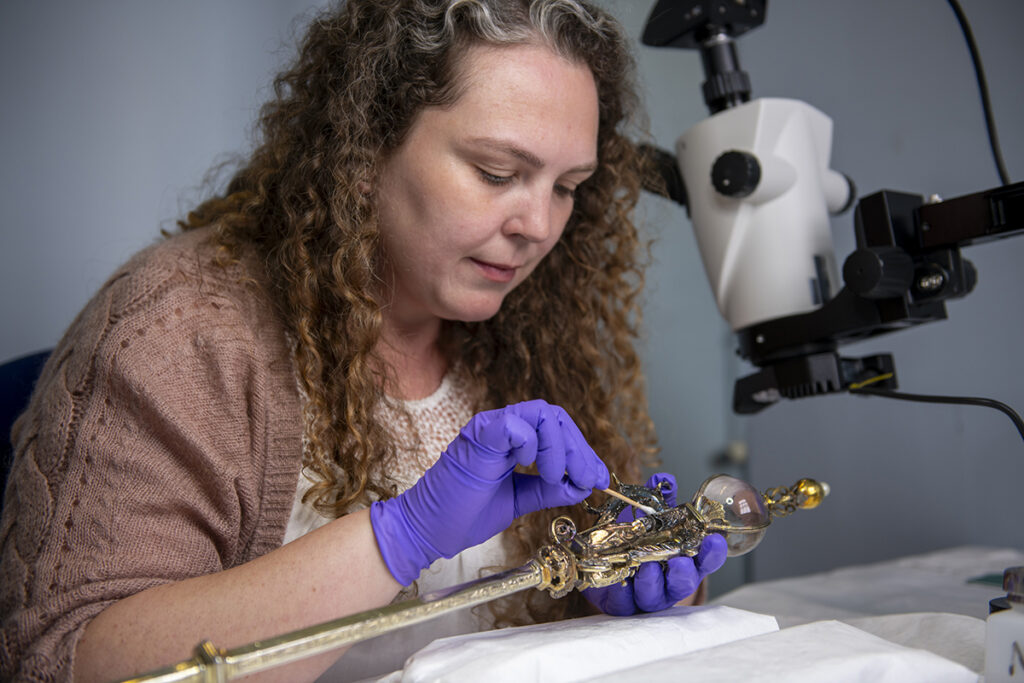
Reed Hudson cleaning the sceptre
Conservation for Posterity
The first step of any conservation treatment is to research the object – including how it was made, how it has been used historically and how it has been cared for over the years. You also need to take a very close look at the materials that it’s made from – we call this a condition assessment.
Our work to conserve these ancient artefacts for future generations to enjoy also aims to reveal the fascinating stories they hold. The Sword and Sceptre, for example, are decorated with silver which has tarnished over time hiding some of their historical details. By employing gentle cleaning methods such as using solvents and soft brushes to carefully reduce this tarnish, we have been able to uncover the hidden tales etched into the Scottish Crown Jewels.
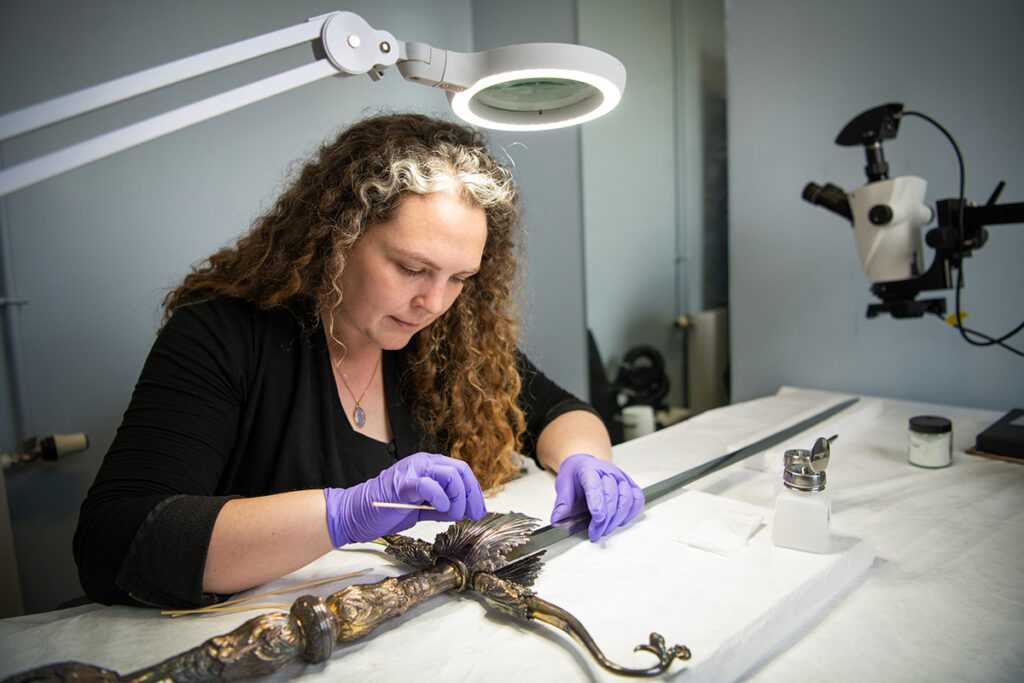
The Digital Documentation Team have been on hand to create special 3D models of the objects, while the Science Team have carried out analysis of the materials they are made of. Meanwhile, Senior Stone Conservators Colin Muir and Olga Marzantowicz, have continued to work on the Stone of Destiny. Behind the scenes here at the castle, the Castle Works Team and the Castle guides have been helping to keep the project moving.
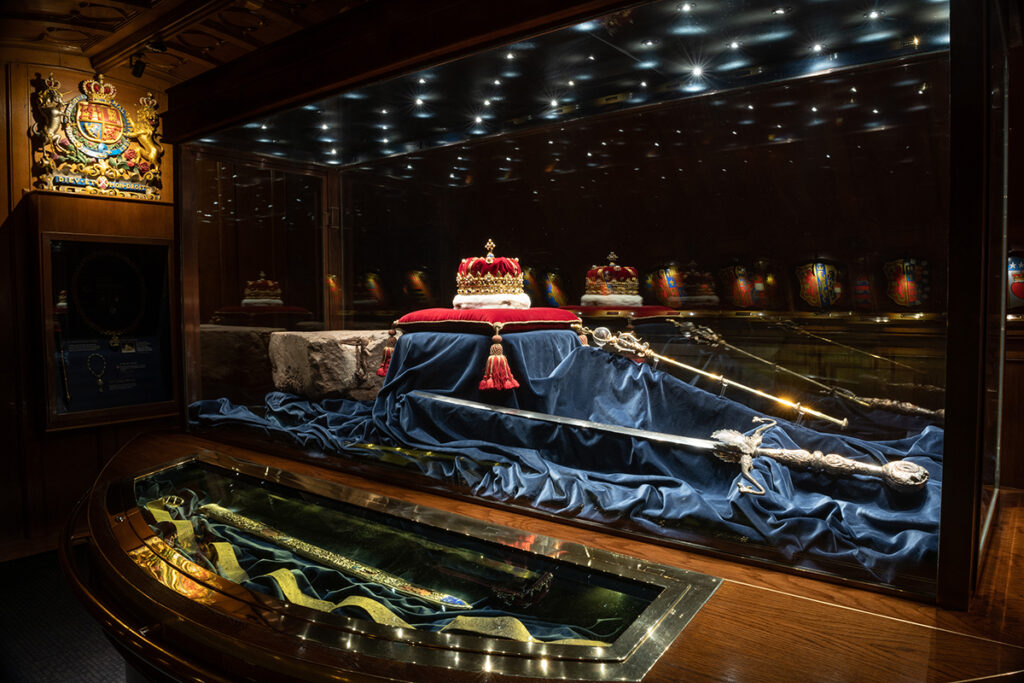
The conservation of the Honours of Scotland has now finished its final phase in November 2023, this dedicated work secures the future accessibility of these objects. Together with the research and scientific analysis, our aim is not just to safeguard these treasures but also to learn more about them, finding better ways to care for and share their stories with you.
Book your tickets today to visit this iconic collection and uncover more about Scotland’s past!
